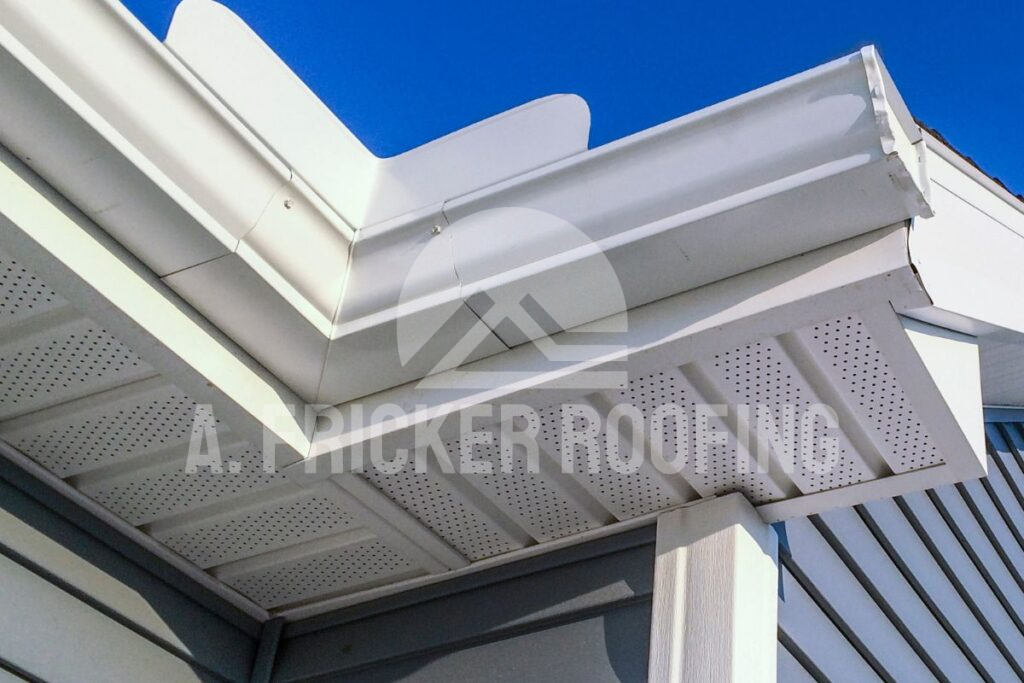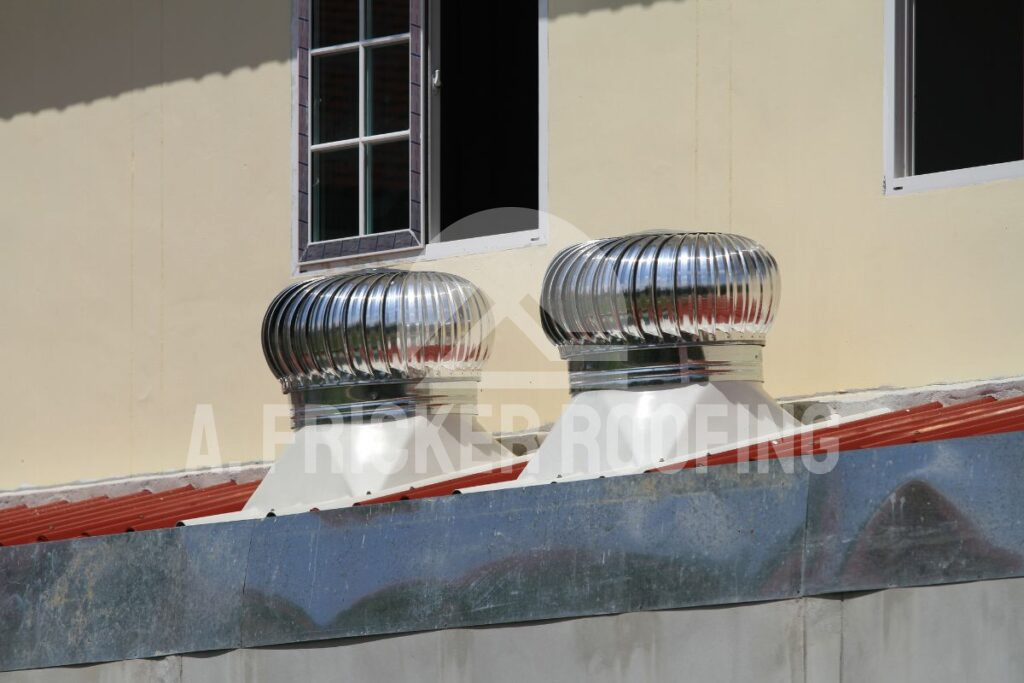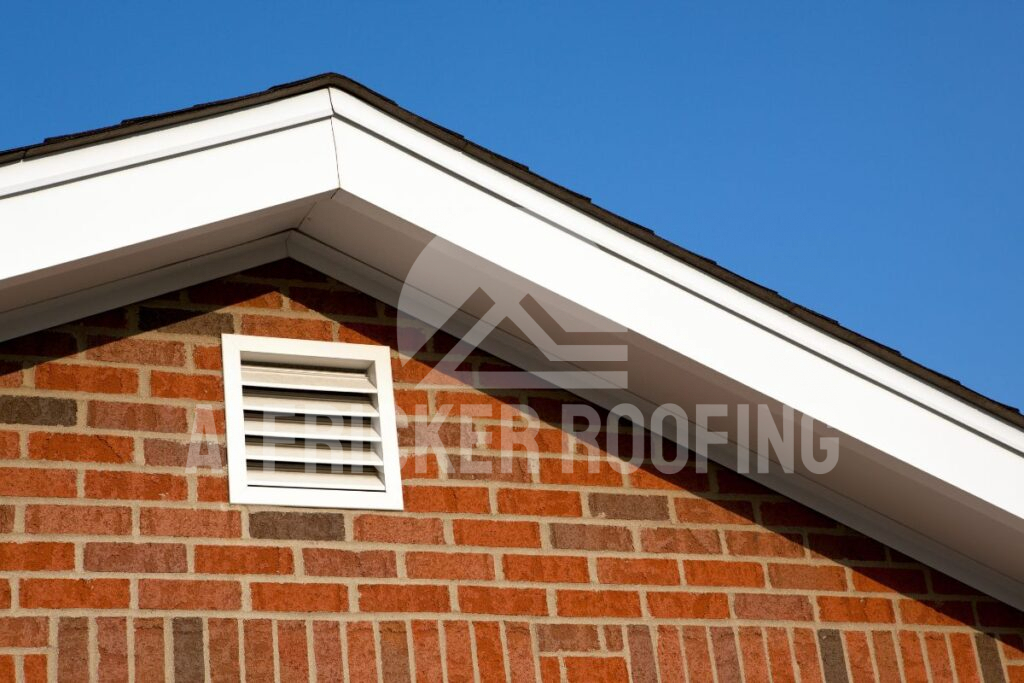To maintain a healthy home, your roof needs to be in top shape and must do more than just keep rain out. While most homeowners focus on the visible aspects of their roofs—like shingles and gutters—there’s another crucial component that you might overlook: roof vents.
Proper roof ventilation is something you might not think about often, but the comfort of your home depends on it. Whether you’re dealing with roofing issues or building a new home, understanding roof vents can save you a lot of headaches—and cash—down the line.
What Are Roof Vents?
Roof vents are openings or devices installed in your roof system designed to provide proper airflow in your attic. They allow warm, moist air to escape while letting fresh air in. You might not see them (depending on the type), but they work behind the scenes to ensure your home stays energy-efficient, mold-free, and structurally sound.
At first glance, they might seem like a small detail, but without the right ventilation, your attic can trap heat and moisture, leading to problems like mold growth, roof damage, and even higher energy bills. Roof vents keep your attic—and by extension, your entire home—cooler in the summer and drier in the winter.
How Do Roof Vents Work?
As we mentioned above, roof vents allow airflow into and out of your attic. The basic principle is to have a balance of intake vents (which bring cool air into the attic) and exhaust vents (which allow hot, moist air to escape). Together, they create a continuous flow of air that keeps the temperature and moisture levels in check.
Intake vents are usually located at the eaves or soffits (the underside of your roof’s overhang). They pull in cooler air from outside. Exhaust vents, on the other hand, are placed higher up on the roof, near the ridge or peak, allowing warm air to escape. As hot air rises, the exhaust vents help expel the warm, moist air that accumulates near the roofline.
Why Are Roof Vents So Important?
Now that you know what roof air vents are and how they work to maintain attic temperatures, it’s time to learn about their benefits. Here are a few reasons why they are important for your home:
Helps Regulate Indoor Temperatures
Roof vents play a key role in keeping your attic temperature balanced. As a homeowner in Oklahoma, you know the summers here are hot and dry. During these months, your attic can become incredibly hot. Without proper ventilation, this trapped heat will seep down into your living spaces, making your entire house feel warmer (which can be a nightmare in peak summer).
This forces your air conditioner to work harder, driving up your energy bills. In the winter, roof air vents help by letting out the warm, moist air that naturally rises into the attic. This prevents condensation from building up, which can lead to serious problems like ice dams forming on your roof.
Prevents Moisture Damage
Just like excess heat, moisture is also a big problem for roofs, and without the right ventilation, it can lead to significant damage over time. Warm, moist air from daily activities tends to rise and reach the attic.
If that humid air can’t escape, it condenses on cooler surfaces like wooden beams and insulation. Over time, this moisture leads to issues like wood rot, mold, and mildew, which can weaken your roof structure and even affect the air quality inside your home.
But you can avoid this if you have the right roof vents in place. Proper roof ventilation allows that moisture to exit before it causes these issues.
Roof Vents Extend The Lifespan Of Your Shingles
Roof vents don’t just keep your attic cooler—they also help your roof materials last longer, especially if you have an asphalt shingle roof.
In the above cases, we mentioned how heat and moisture get trapped inside the attic when there is no ventilation. This heat moves upwards to your shingles, too. This, along with excess moisture, can cause shingles and other roofing materials to degrade faster, leading to costly repairs or premature roof replacement. Effective roof ventilation reduces the strain caused by high heat and damp conditions, protecting your roof from damage and wear. In simple terms, exhaust roof vents help you get more years out of your roof before major repairs or replacements are needed.
Help Reduce Your Monthly Bills & Improve Energy Efficiency
A poorly ventilated attic traps heat, making your home hotter in the summer and forcing your air conditioner to work overtime to maintain a comfortable temperature. This not only increases your cooling costs but also puts extra strain on your HVAC system, potentially shortening its lifespan. By allowing the hot air in your attic to escape, roof vents help keep your home cooler naturally, reducing the need for excessive air conditioning and ultimately lowering your energy bills.
Also Read: Top 4 Metal Roof Vents Of 2024
Types of Roof Vents
Roof vents aren’t one-size-fits-all. There are various types, each designed for specific needs and roof structures. Here’s a breakdown of the main types, so you can get a better idea of which might suit your home best.
Roof Ridge Vents

Ridge vents are among the most popular types and are installed at the very peak of your roof. They’re typically covered by shingles (known as ridge cap shingles), so they are not very noticeable and blend in nicely with your roof.
They offer even ventilation across the entire roof, which is a huge benefit. Plus, they don’t require much maintenance since they’re less prone to blockage compared to other types.
Also Read: Roof Ridge Vent Problems: 5 Potential Snags And How To Fix Them
Soffit Vents

Soffit vents are located along the eaves of your roof, under the overhangs. These vents are responsible for bringing cool, fresh air into your attic space. Without intake air, your attic won’t have the airflow it needs to push hot air out. Soffit vents are often used in combination with exhaust vents (like ridge vents) to create a system where air is constantly flowing in and out.
Box Vents (Static Vents)

Box vents, also known as static vents, are individual vents that sit on the roof near the ridge. These are small, square-shaped vents that allow heat and moisture to escape from the attic.
They’re simple, affordable, and effective for homes with smaller attics. They’re a great option if you don’t want a continuous ridge vent or if your roof doesn’t have much ridge space.
Turbine Vents

While the box vents are good for roofs with a smaller area, turbine vents are made for larger ones. Turbine vents are easily distinguishable as they have a large circular dome-like shape. Turbine vents have a spinning mechanism that uses wind power to suck warm air out of the attic. The faster the wind blows, the quicker the turbine spins, and the more air it expels. They’re great for areas with high wind speeds.
For More Information, Read Our Guide: Troubleshooting Turbine Roof Vents: 5 Issues and Solutions
Power Vents
Power vents use electricity to run a fan that pulls hot air out of your attic. They’re typically equipped with a thermostat or humidistat, which turns the fan on automatically when the attic gets too hot or humid.
They offer reliable, efficient ventilation regardless of wind conditions. If your attic tends to get extremely hot, power vents are a great solution. However, they do use electricity, so you might see a slight increase in energy bills.
Also Read: 3 Types of Attic Vents & Best Brands You Should Know In 2024
Gable Vents

Gable roof vents are openings installed in the gable end of a house – the triangular portion of a wall between the edges of a sloping roof.
They’re relatively easy to install and are an inexpensive option. However, they rely on natural wind direction and pressure, so they might not be as effective for larger homes as other types of vents.
Have A Flat Roof? Check Out: 5 Types Of Flat Roof Vents And Their Uses
Signs Your Roof Ventilation Needs Attention
Now that you know the basics, how do you know if your roof vents are doing their job? Here are some signs that your ventilation might need a check-up:
High Energy Bills
If you notice your energy bills creeping up, poor ventilation might be the culprit. When heat gets trapped in your attic, your HVAC system has to work harder to cool the house.
Ice Dams in Winter
Ice dams occur when warm air in your attic causes snow on your roof to melt and then refreeze near the eaves. This is a clear sign that your attic is warmer than it should be, meaning your roof ventilation isn’t working properly.
Excessive Heat in Your Attic
If your attic feels like a sauna in the summer, it’s a red flag that you don’t have enough ventilation. Take a thermometer up there on a hot day and if it’s significantly hotter than the rest of your home, you need more ventilation.
Can You Install Roof Vents Yourself?
While some handy homeowners might consider DIY, roof vent installation is usually best left to the professionals. We all know that working on a roof can be dangerous, and improper vent installation can cause more harm than good—leading to leaks or ineffective ventilation.
That being said if you’re confident in your DIY skills and want to tackle it yourself, make sure you follow all manufacturer guidelines and research the correct placement and venting calculations.
Final Thoughts: Why Roof Ventilation is Worth the Investment
As a homeowner, you have plenty of things to think about—so why add roof vents to the list? Roof ventilation can have a huge impact on your home’s comfort, longevity, and even your wallet.
By ensuring your adequate attic ventilation, you:
- Protect your roof from premature wear, mold, and water damage.
- Boost your home’s energy efficiency, which can save you money on heating and cooling bills.
- Extend the life of your roof, reducing the need for costly repairs or a full roof replacement.
So, if you haven’t thought much about your roof vents before, now’s the time to do so. If you need to upgrade your roof ventilation with new roof vents, look no further than the team of A. Fricker Roofing and Waterproofing. We have a team of expert roofers who have years of experience installing and replacing roofing systems across Tulsa and surrounding areas of Oklahoma. Contact us today at (918) 402-7167 to learn more about our services.
A. This isn’t necessarily true. More vents won’t help if they’re not placed or balanced properly. In fact, too many vents without a strategy can disrupt airflow or even let in moisture. It’s about having the right type and amount of vents, not just installing them.
A. Installing a roof vent depends on the type of vent you are installing. However, in general, the process requires cutting through the roof, sliding the vent beneath the shingles, and securing it with the help of nails. After, nailing sealant is applied to seal the edges. The process is quite complex and it is best to hire a roofing contractor.

